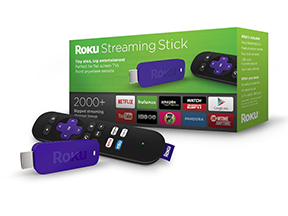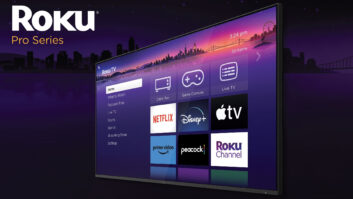
Fresh on the heels of its IPO last Thursday, Roku updated its product line with a focus on an improved OS for both stand-alone devices and the growing number of Roku-equipped TVs, as well as replacement models to strengthen its segment-leading market share position.
With the introduction of a new Apple TV and Amazon Fire TV last month, Roku is looking to keep up with the pack from a features perspective. A major update to its operating system will soon roll out for both stand-alone streaming players and the growing lineup of Roku sets from Element, Hisense, Hitachi, Insignia, RCA, Sharp and TCL, which is on track to encompass more than 150 individual models in North America by the end of the year.
OS 8, which will start rolling out to the streamers this month and to the Roku TV models next month, adds enhanced voice search, allowing search and launch and single sign-on for TV Everywhere channels, eliminating the need for repeated log-in when accessing services the user already subscribes to through AT&T, Cox, Dish and other providers. Those capabilities match competing new models, but a redesigned 4K Spotlight Channel goes one better by allowing search for HDR or Dolby Vision content (when allowed by the device) as well as the option to choose from multiple streaming services when a program is available from more than one source.
Beyond those universal OS 8 features, Roku TVs will add an additional range of features, including a Smart Guide that integrates off-air channels with streaming options. For OTA channels, the guide depth has been increased from seven to 14 days. The Roku Search will also extend to OTA channels as well as streaming services providing a comprehensive search base for cord-cutters.
The voice control for the Roku TVs will also be expanded to add more TV-centric features such as input switch and channel launch in response to the service name (for example: “play Hulu”). Also, the Private Listening option will be added for OTA content, as well as streaming channels, via the Roku mobile app or, on select models, through the remote’s headphone jack.
Across the board, the new OS 8 upgrade and model line refresh will certainly keep Roku competitive. A true deep dive will have to wait until we have the products in hand, but a few additional items are worth mentioning:
First, the absence of Dolby Vision leaves the Chromecast Ultra and the new Apple TV 4K as the only streamers currently available with that format. However, when Dolby Vision is part of a Roku TV’s feature set, it is obviously available. Next, it’s interesting to note that the pictures released for the new models all show “one-touch” access to Netflix, Sling and Hulu, but the lower right-hand button shows a different service for each model. For example, the choice ranges from Amazon to PlayStation Vue, HBO Now and DirecTV Now. The latter is curious considering that Roku was one of the last to add the DirecTV app to their lineup; however, I can attest from personal experience that the app performs well.
Finally, the new Roku Streaming Stick+ uses the older USB mini connector on the device-side rather than the more typical USB micro-to-USB Type A. This, along with fact that the special cable with the wireless circuitry built in means that any cables used with current back-of-set devices need to be replaced. In the absence of complete specs it is difficult to say if the current requirements of the new device is greater than what is typically supplied by on-set USB ports, but experience with current models from a variety of 4K models suggest that the factory-supplied adapter will be required.
Moving into the fourth quarter’s high-volume activity, the new Roku devices, along with competitive improvements from Roku’s new OS 8, definitely tightens up the horse race for these products while giving new options to cord cutters.













